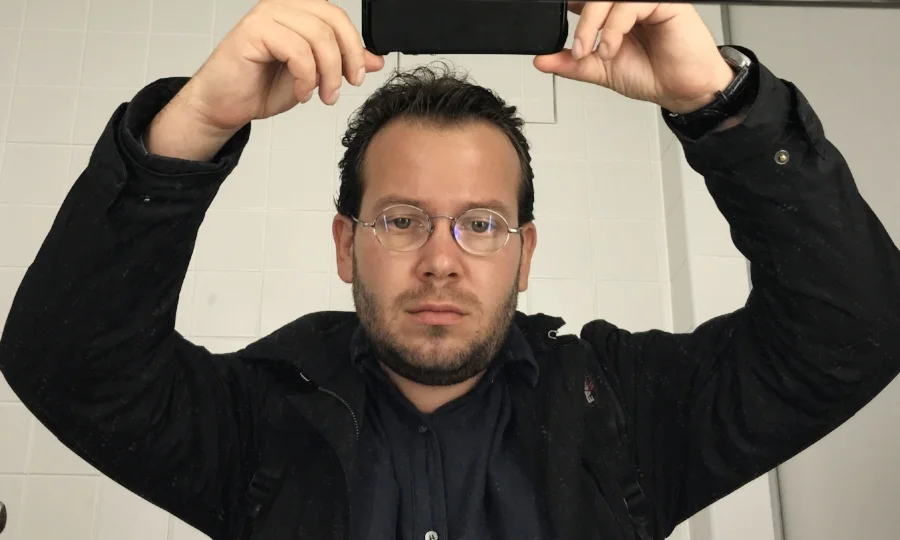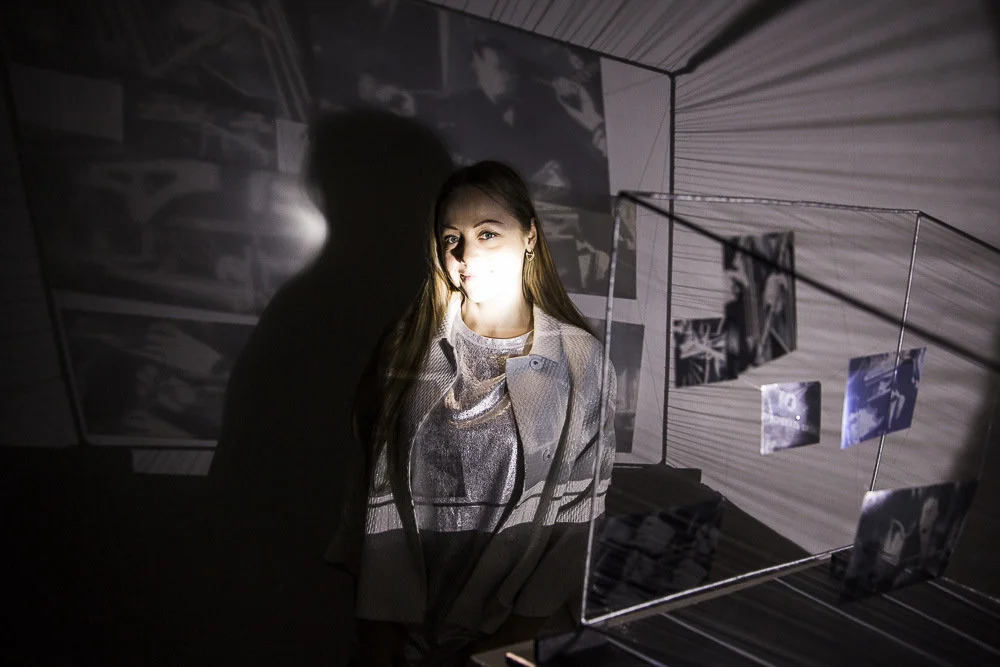Tim Parchikov, visual artist
Story of Tim
Tim Parchikov has always be surounded by art. During his early childhood in France, he got into photography. Adolescent and back to Russia, he decided to enter a school of cinéma and graduated few years later as director of photography. His childhood dream was not far away.
Working in the movie industry implies long periods of time between two projects. So Tim kept doing what he loved and dedicated his « holidays » to his career as a photographer. Now, he is exploring new medias such as video art or installation but he still goes back and forth, from cinema to personal work. This way, he satisfies both his need of team work and his habit to work on several projects at the same time.
Multi-tasking imposed on him as a life style and he juggles with cinema, video, photo, special orders, museums, galleries, dead lines and free timing. This is how one project stimulates another or at the contrary let it rest a bit to acquire more distance and substance.
This is also how he earns a living. If being an artist was not something he decided on one day, it has somehow come to be a real job, even more than the movie industry. He is even about to go to a proper « office », as he’s recently been given a studio : an opportunity to move all his in gestation projects away from his flat.
Still, he is fully aware of the uncertainty his artist status implies. The 2014 crisis has hit harshly on the art market and artists are the first to be affected. Hopefully, Tim is represented by foreign European galleries such as Priska Pasquer Gallery (Germany) or Juana de Aizpuru Gallery (Spain). His work has been seen in Germany, Spain, Italy, France, the UK, China, etc. This network was forged without any given strategy or the help of an artistic agent. His luck was nonetheless pushed by Tim’s facility with English and French.
Better to be able to talk about his work to develop internationally, in a period when even galleries fight to exist beyond Russian borders.
Art of Tim
As said, the variety of Tim’s work could be his signature. However, some common themes run through his work, even though not consciously developped : the concept of time as well as the search for avatars and copies, questionning the way we look at the reality in a sometimes documentary manner. If there is no strong visible homogeneity among his projects, Tim is definitely influenced by his study. His cinematic eye on his topics undoubtedly shapes his work.
More than by contemporary art, Tim is inspired by many movies, litterature and classical references. Being 34, he is from a generation less marked by the sovietic era even if he appears to know a lot about it. His work does not reflect on it, as an attempt to document the present without analyzing the past.
Because analyzing his work is time-consuming enough. As a cook, Tim lets his art stand.
Every project is begun, then left to rest. This « empty » time is put to good use, working on other pieces. But above all, it brings some distance to the project, helps the artist to change it, end it or give it up. With this working process, the gestation time is very variable, from weeks to years. The Suspens serie was gathered in almost ten years. In deed, if there is no deadline, why not try to improve it again and again ?
Aware of his bias, Tim sees in exhibition an opportunity to freeze a project, momentarily or for good.
« The first exhibition is rarely the best one. I can see what I can change, improve in the project. I also like to make books. It is a good way to put my work at some distance ».
Again, distance is summoned and a book becomes an occasion of putting some perspective before the full stop. In addition to that, a book is complementary with an exhibition, giving the audience a far more cheaper reminder of an artistic experiment.
But according to Tim, the best way to engage an audience into one’s art is through a good curating of exhibitions.
While working, Tim does not give a thought about the audience or the potential buyer. But once it is ready to be seen, what is the point in designing an exhibition for happy fews and conoisseurs only ? He believes that with curating good care, the most complexe art pieces may be readable to the public, with minimum effort. The art of exhibition is to make one’s art reachable. If there is still a long way to go, Russian and world wide art microcosms are openning. For the best.
Being an artist at stake
If Tim tends to include the public in his work, he does not feel any responsability toward it. He takes responsability for just himself. His documentary approach searches for distance but does not want to report or criticize anything. Or so Tim tells, defending a very personal and aesthetic research.
Maybe his ambivalent relationship with history and current events are part of his position. Tim knows a lot about Russian history of the past century and has a personnal opinion about the news. But as an artist, he prefers to put it aside, to try to exist in spite of all that, even though he is well aware of the self-censorship it can entail. This is not a lack of courage from Tim. More like an internalized way of working that drives his focus on the quality of his approach more than on its impact on the world. I believe this is a system shared by a lot of artists of his generation. It may be the one common trait of a generation of artists that did not gather as a established movement. Being the first who did not grow during the sovietic era, Tim’s generation explored the wide range of possibilities and scattered in all directions. This overflow has allowed great freedom but
also made more difficult for an audience used to classicism to understand what it was all about. Tim feeling about it is quite practical : Belonging to a school or a movement makethings easier for an artist as it gives tools to read his art. This is even truer for multi media artists whose art vocabulary is not yet well understood. He relates « In people’s mind, being an artist is still a good excuse to chill. It is hard to appreciate what we do all day. When I am arrested at a road block, I always say I work in the movie industry. This is less vague. And policemen loves cinema. »
In a country full of contrasts, in a city full of excesses, Tim seems to look his place. Nor can he be openly underground neither can he turn his art from documentary to anti-establishment : because it would be a too difficult business model to keep and a harder position to maintain.
He has to seek success without catching too much of the official light in order to hold the sovietic ghosts back and to respect his owns ethics and artistic thrive.
In his funambulist path, Tim takes part in a larger trend in which distancing is own work is the only way to know if he does good. During the perestroïka, many archives were opened but nobody really took the opportunity to rummage through it. These last years, publishers, among which the Garage, focused on these documents and began editing Russian art books, highlighting a hidden russian art history and by such allowing Russian artists to fully know what they unherited. In the same way, Tim’s habit of documenting his work may be the best way for him to find his uniqueness.
And let’s trust time to give it its deserved place in our time art history.
To know everything about Tim, it's here.
Credits : courtesy of the artist.












